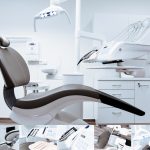
If you’re reading this, chances are you or someone you know has been wondering whether Invisalign is a suitable solution for correcting an overbite or underbite. For many, the prospect of wearing traditional braces with their metal brackets and wires is less than appealing. Invisalign, with its near-invisibility and comfort, seems like a dream come true. But the question remains: Can this innovative treatment really tackle the challenges of an imperfect bite? Let’s look at the facts and see if Invisalign is up to the task.
The Invisalign Treatment Process for Overbite and Underbite
1. Professional Assessment for Invisalign Suitability
-
The first step involves a thorough evaluation by a trained dental professional to assess your dental needs.
-
Diagnostic tools like X-rays, photographs, and digital scans or physical dental impressions are used to understand your overbite or underbite.
-
Based on these assessments, a personalized Invisalign treatment plan is crafted specifically for your dental correction.
2. Beginning the Invisalign Journey with Custom Aligners
-
Custom clear aligners are provided, designed to fit snugly over your teeth and subtly correct their alignment.
-
Commitment is key, as the aligners must be worn for 20 to 22 hours daily, except during meals, drink breaks for non-water beverages, and while brushing or flossing.
-
As your teeth gradually shift, you will transition to a new set of aligners every few weeks, each slightly different, to continue guiding your teeth toward the desired position.
3. Ongoing Dental Supervision and Timeframe of Treatment
-
Regular dental appointments are necessary to ensure your teeth are moving according to the treatment plan.
-
The overall time for Invisalign treatment varies based on the complexity of the case, with durations ranging from 6 months to a year and a half.
-
For more complex bites, the process could extend beyond 18 months and may involve additional orthodontic procedures to achieve optimal results.
4. Mid-Treatment Adjustments and Assessment
-
Throughout the treatment, adjustments might be required to the aligners or overall strategy based on the progression of your teeth.
-
Your dentist may use Invisalign’s tracking software to compare your teeth’s movement with the planned progression and make necessary changes.
-
These in-between assessments are crucial in ensuring that each aligner is effectively working towards correcting your overbite or underbite.
5. Transition and Retention Phase Post-Invisalign
-
After you have gone through the necessary series of aligners, a final evaluation is conducted to ensure the desired alignment has been achieved.
-
Post-treatment retainers are often provided to maintain the new position of your teeth and to prevent relapse.
-
Regular follow-up appointments may still be advised to monitor the stability of your bite and the effectiveness of the retention phase.
6. Life After Invisalign Treatment
-
Upon completion of treatment and retention phases, you can enjoy the benefits of a corrected overbite or underbite with improved dental function and aesthetics.
-
To preserve the results of the Invisignal treatment, it’s important to maintain good oral hygiene practices and attend routine dental check-ups.
-
Any further orthodontic needs or adjustments can be discussed with your dentist to ensure long-term satisfaction and oral health.
Factors Affecting Invisalign’s Effectiveness
While Invisalign can treat many cases, its effectiveness depends on several factors, including:
-
The severity of the overbite or underbite
-
The patient’s age and jaw development
-
Compliance with wearing the aligners as prescribed
-
The skill and experience of the Invisalign provider
Its suitability for your specific situation can only be determined after a professional consultation. Nevertheless, advancements in Invisalign technology have made it increasingly capable of treating complex dental issues.
Comparison Between Invisalign and Braces
When considering treatment for any bite correction, it’s valuable to compare Invisalign vs. braces. Traditional braces have been the go-to solution for decades, mainly because of their suitability for a wide range of orthodontic issues. They consist of metal brackets attached to the teeth, connected by wires that are periodically tightened to shift teeth into place. Both methods aim to straighten teeth but differ significantly in several aspects:
-
Appearance:
-
Invisalign: Nearly invisible clear aligners.
-
Braces: Metal brackets and wires are more noticeable.
-
Comfort:
-
Invisalign: Smooth plastic trays are generally more comfortable.
-
Braces: Can cause discomfort due to metal components.
-
Maintenance:
-
Invisalign: Removable, easier for eating and cleaning.
-
Braces: Fixed, require special cleaning tools.
-
Effectiveness:
-
Invisalign: Best for mild to moderate cases.
-
Braces: Effective for complex dental issues.
What About the Cost?
Let’s address the elephant in the room – cost. It’s important to understand the cost of the treatment options you’re considering. Invisalign and traditional braces are often comparable in price, but the actual cost will depend on the specifics of your case, including the complexity and length of treatment.
Most dental insurance plans cover some orthodontic treatments, including Invisalign. Additionally, there are various payment plans and financing options available. You should speak with your dental care provider to get a clear understanding of your financial commitments.
Aftercare Following Invisalign Treatment
Maintaining Your New Smile
Once you’ve completed your Invisalign treatment, aftercare is critical to maintain your new smile. Your dentist will likely recommend a retainer to keep your teeth in their new position. Initially, you may need to wear it full-time, but this usually transitions to only during sleep. Regular dental check-ups and cleanings are also key to keeping your smile healthy and beautiful.
Top Dental Care in Success
For the best results with Invisalign, you need top-notch dental care. The expertise and guidance of a skilled dentist can make all the difference in treatment outcomes. A practice like a top dental care at Raleigh Dental Loft offers personalized attention, advanced technology, and professional experience to ensure you receive the top dental care you deserve.
Final Thoughts
The dream of a corrected bite without the traditional metal braces could be a reality for many with Invisalign. It’s important to work closely with your dental care provider to achieve the best results. Remember, each smile is unique, and with the right approach, that confident, healthy grin can be yours. If you’re considering this path, take that next step and consult with a dentist who has the expertise to guide you on this journey toward a better bite and a brighter smile.























































